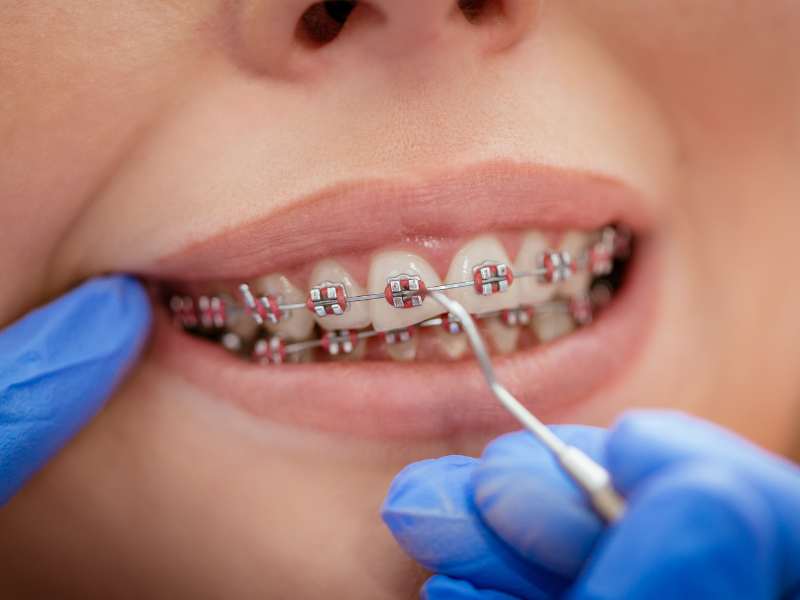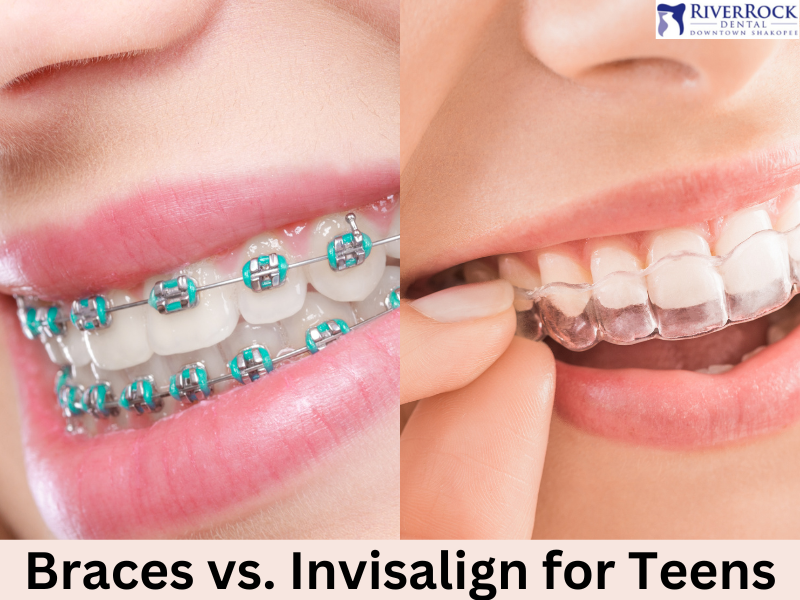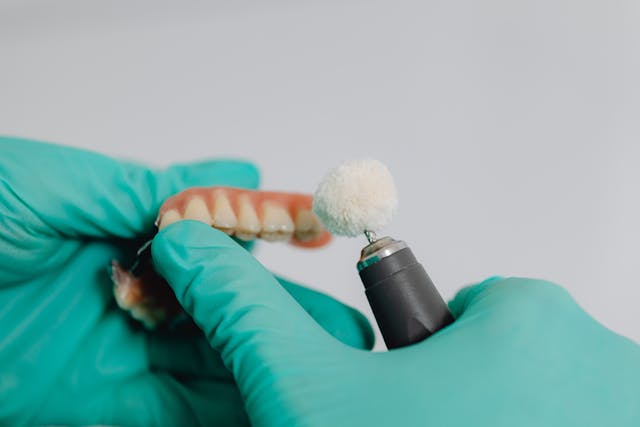Invisalign for teens introduces a revolutionary approach to orthodontic treatment. These advanced clear aligners provide enhanced comfort and a wide range of options for orthodontic patients.
With their nearly invisible appearance, Invisalign aligners offer a discreet way to straighten teeth gradually. The innovative technology of Invisalign for teens is a clear alternative to traditional braces, appealing to teenagers seeking a stigma-free solution for achieving a beautiful smile.
If you’re a parent whose teenager is contemplating braces and Invisalign, you might be curious about the distinctions between these two orthodontic treatments. Both braces and Invisalign offer effective solutions for achieving straighter teeth, but they have notable differences that may make one option more suitable for your teenager than the other.
Understanding Braces vs. Invisalign for Teens
It can be a bit of a mystery if you’re unfamiliar with how braces work. To better understand and compare braces with Invisalign, here are simple explanations of each treatment:
Braces

Traditional braces involve bonding metal brackets to the surface of each tooth. An orthodontist then places a metal archwire through the brackets secured with elastic O-rings (you can choose fun colors!). Alternatively, you can opt for clear braces that blend with your natural tooth color and are less noticeable. The archwire is periodically adjusted to move the teeth into proper alignment gradually.
Invisalign for Teens

Invisalign utilizes clear aligners created from a 3D scan of the patient’s mouth. The patient is given a series of aligners that differ slightly from one another. Each aligner exerts gentle pressure, shifting the teeth less than a millimeter. Every tray guides the teeth to a more desirable position compared to the previous tray. Each aligner is usually worn for one to two weeks before moving on to the next. Invisalign aligners are simply detachable and can be worn and removed.
Differences Between Braces & Invisalign for Teens
The most notable distinction between braces and Invisalign is their visibility. Braces are easily noticeable, while Invisalign aligners are nearly invisible. This factor often makes Invisalign a preferred option among teenagers who value their appearance during treatment.
However, it’s important to consider the potential downsides of Invisalign for teens that may lead to braces being a better choice for your teen.
- Invisalign for teens aligners need to be removed before eating and brushing their teeth, which can be inconvenient for busy teens.
- Since they are removable, there is a risk that teenagers may not wear them as frequently as recommended, potentially prolonging the treatment duration.
- Invisalign for teens tends to be more costly compared to traditional braces.
What are the Benefits of Braces vs. Invisalign for Teens
Benefits of Braces
Braces have various advantages for teenagers.
- They improve the appearance of your child’s smile and correct misalignment problems.
- Braces can also safeguard your child’s teeth, preventing future damage and making oral hygiene care easier.
- With a variety of braces available, each with its own set of benefits and drawbacks, your orthodontist will provide experienced advice customized to your child’s individual needs.
It is critical to see an orthodontist when considering braces for your adolescent. They will assist you in identifying the best solution for your child.
Benefits of Invisalign for Teens
While both Invisalign for teens and braces help straighten teeth, they differ significantly.
- One significant advantage of Invisalign for teenagers is that the aligners are almost undetectable when worn, making them appealing to self-conscious individuals.
- Invisalign aligners are readily removed for eating and brushing, eliminating the need for food traps or difficult oral hygiene routines.
- Another benefit is that Invisalign treatment generally requires less time than braces, with an average duration of 12 months versus 24 months, allowing teens to achieve their desired smile more quickly.
- Although Invisalign for teens may have a higher upfront cost than traditional braces, many parents find the treatment’s flexibility and convenience worth the investment.
If you’re contemplating Invisalign for your teenager, it’s important to consult an orthodontist to determine if it’s the right treatment option for their needs.
What is the Cost of Braces vs. Invisalign for Teens

The cost is an important consideration when deciding between Invisalign and traditional braces. Generally, braces tend to be less expensive, although this is not always the case. Invisalign for teens is customized for each individual, involving advanced 3D technology, which can contribute to the overall cost.
In contrast, braces are designed to be more straightforward for orthodontists to work with. They can visually inspect and adjust the wires without the involvement of a third-party lab, as required by Invisalign. If price is your main concern, traditional braces may be the more affordable.
Braces can range in cost from $5,000 to $7,000, while Invisalign for teens typically ranges from $4,000 to $7,000. It’s important to note that these prices are estimates and can vary based on several factors. At RiverRock DDS, we offer our patients dental plans that can significantly lower the cost.
Braces vs. Invisalign for Teens — What Should You Choose?
When making a decision between braces and Invisalign, it’s important to consider various factors:
Personal Preferences
Take into account your personal preferences regarding aesthetics, comfort, and convenience. Consider which option aligns better with your lifestyle and goals.
The Severity of Orthodontic Issues
The extent of your orthodontic issues is a significant factor. Braces are typically recommended for complex cases, while Invisalign is often suitable for mild to moderate issues.
Lifestyle Considerations
Evaluate your lifestyle and activities. If you engage in contact sports or play musical instruments that may be affected by braces, Invisalign might be a more suitable choice.
Affordability & Insurance Coverage
Consider your budget and whether your insurance covers orthodontic treatment. Braces and Invisalign may have different costs, so discussing financial considerations with your orthodontist is essential.
RiverRock DDS provides dental plans to assist you in sharing the burden of Invisalign treatment.
Conclusion
Invisalign for teens and braces are excellent choices for teenagers seeking to enhance their smiles. Finally, the choice of treatment should take into account aspects such as cost, convenience, and personal preference. Invisalign may be pricier, but it provides greater flexibility for daily activities like eating and oral hygiene.
On the other hand, traditional braces are often more cost effective and can yield faster results in certain cases.
Schedule an appointment with the dentists of RiverRock DDS to discuss which option is best for you. Call now at 952.445.5556.
FAQs
-
What is the good age for Invisalign?
Commencing Invisalign treatment as early as seven years old can be advantageous for children. While there isn’t a specific age for braces, dentists often recommend advanced dental treatments for teenagers. Invisalign is an excellent solution for addressing your child’s teeth misalignment issues.
-
Which is faster, braces or Invisalign?
The complete time of orthodontic treatment depends on how much the teeth need to be moved. On average, Invisalign may take 9 to 18 months; on the other hand, Braces take 22 months to move teeth into the desired alignment.
-
Does Invisalign change the shape of face?
Orthodontic treatments do not elongate your face or alter your nose’s shape. The perceived changes occur due to adjustments in the angles between your nose and lips, and sometimes between your chin and lip, which can give the appearance of slight differences in your nose and facial features.






